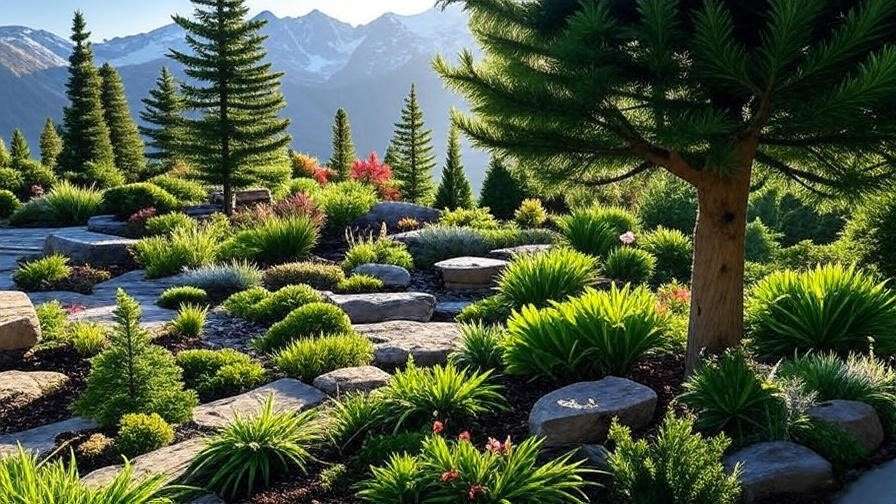Imagine a garden where rugged, resilient alpine trees stand tall against howling winds and frosty mornings, their evergreen needles glistening under a mountain sunrise. 🌞 These remarkable trees, shaped by the harsh conditions of high-altitude landscapes, are more than just plants—they’re a testament to nature’s adaptability. Whether you’re a seasoned gardener or a beginner dreaming of a sustainable, low-maintenance landscape, alpine trees offer unmatched beauty and resilience. In this comprehensive guide, we’ll explore how to select, plant, and care for alpine trees, ensuring your garden thrives in any climate. 🌿 Backed by insights from horticulturists and high-altitude gardening research, this article provides practical tips, species recommendations, and solutions to common challenges to help you create a stunning, eco-friendly oasis. 🌳 Let’s dive in and discover the secrets to growing these mountain marvels! ✨
1. What Are Alpine Trees? Understanding Their Unique Characteristics 🌲
1.1 Defining Alpine Trees 🌍
Alpine trees are specialized species that thrive in high-altitude environments, typically above 1,500 meters, where conditions are unforgiving—think freezing temperatures, intense UV radiation, and nutrient-poor soils. 🏔️ These trees, such as subalpine fir (Abies lasiocarpa), Engelmann spruce (Picea engelmannii), and dwarf conifers, have evolved unique adaptations like compact growth, needle-like leaves, and deep root systems to survive wind, cold, and drought. 💨 Their ability to flourish in extreme conditions makes them ideal for gardeners seeking hardy, low-maintenance plants. According to Dr. Jane Peterson, a botanist at Colorado State University, “Alpine trees are nature’s survivors, offering both ecological benefits and aesthetic appeal for sustainable landscapes.” 📚
1.2 Why Choose Alpine Trees for Your Garden? 🌿
Why plant alpine trees? For starters, their resilience makes them perfect for challenging climates, from mountainous regions to urban rooftops mimicking high-altitude conditions. 🌱 They require minimal upkeep, tolerate drought, and provide year-round greenery, making them a favorite for eco-conscious gardeners. 🌎 Alpine trees also play a vital role in erosion control, stabilizing soil on slopes, and supporting local wildlife like birds and pollinators. 🦋 Their compact forms, like dwarf pines, add structure to rock gardens, while taller species create striking focal points. Whether you’re in a cold, windy region or simply want a sustainable garden, alpine trees deliver beauty and function. 🌞
Expert Insight: “Alpine trees are a cornerstone of high-altitude ecosystems, reducing soil erosion and providing habitat for wildlife,” says Dr. Peterson. Their adaptability makes them a smart choice for modern, eco-friendly landscaping. 🌳
2. Choosing the Right Alpine Trees for Your Garden 🌳
2.1 Popular Alpine Tree Species 🌲
Selecting the right alpine tree is key to a thriving garden. Here are some beginner-friendly species, each with unique traits:
- Bristlecone Pine (Pinus aristata): Known for its gnarled, ancient appearance, this slow-growing tree can live for thousands of years. It’s drought-tolerant and thrives in USDA zones 4–7. 🌿
- Mountain Hemlock (Tsuga mertensiana): A graceful conifer with soft needles, ideal for cooler climates (zones 5–7). It grows to 20–40 feet and loves well-drained soils. 🌲
- **Dwarf Alberta Spruce (Picea glauca ‘Conica’)**: A compact, conical tree perfect for small gardens or containers. It’s hardy in zones 2–6 and requires minimal pruning. 🪴
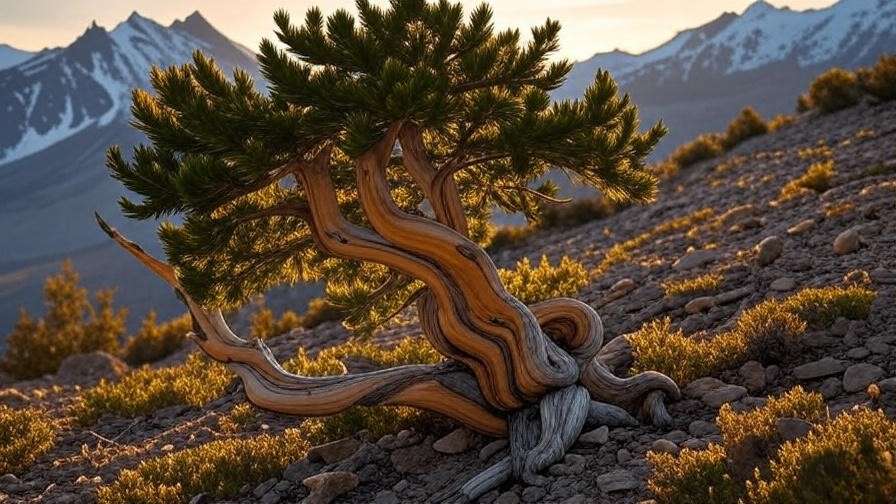
| Species | Height | Hardiness Zone | Care Level |
|---|---|---|---|
| Bristlecone Pine | 8–20 ft | 4–7 | Low |
| Mountain Hemlock | 20–40 ft | 5–7 | Moderate |
| Dwarf Alberta Spruce | 6–12 ft | 2–6 | Low |
2.2 Matching Trees to Your Climate and Soil 🏔️
Before planting, assess your garden’s conditions. Check your USDA hardiness zone (most alpine trees thrive in zones 2–7) and test soil pH, aiming for slightly acidic (5.5–6.5). 🌡️ Mimic alpine conditions by ensuring good drainage—sandy or rocky soils work best. If you’re in a lowland area, raise garden beds to improve drainage and reduce water retention. 💧 Avoid species that require high humidity if your climate is dry. Common mistakes include planting in heavy clay soils or choosing trees unsuited to your zone, which can lead to stunted growth or disease. 🚫
Pro Tip: Use this checklist to evaluate your garden:
- ☑️ Hardiness zone compatibility
- ☑️ Soil drainage and pH
- ☑️ Sun exposure (6+ hours daily)
- ☑️ Wind protection availability ✅
3. Planting Alpine Trees: Step-by-Step Guide 🌱
3.1 When and Where to Plant ⏰
Timing is critical for alpine tree success. Plant in early spring or fall to allow roots to establish before extreme weather hits. 🌸 Choose a site with full sun (6–8 hours daily) and protection from harsh winds, such as near a fence or rock wall. ☀️ Ensure proper drainage—standing water is the enemy of alpine trees. If your garden mimics a high-altitude microclimate (e.g., rocky terrain, cool nights), your trees will thrive. For urban gardeners, raised beds or containers can replicate these conditions. ❄️
3.2 Soil Preparation and Planting Techniques 🌍
Alpine trees prefer well-draining, slightly acidic soils. Amend heavy soils with sand or gravel to improve drainage. 🧪 Dig a hole twice the width of the root ball and as deep as its height. Place the tree so the root collar sits slightly above ground level to prevent rot. 🕳️ Backfill with a mix of native soil and compost, tamping gently to remove air pockets. Water thoroughly after planting, but avoid overwatering. For dwarf varieties, containers with drainage holes are ideal—use a mix of potting soil and perlite. 🪴
Case Study: In 2023, a Colorado gardener transformed a rocky slope into a thriving alpine garden by planting dwarf conifers and subalpine firs. By focusing on drainage and wind protection, they created a low-maintenance landscape that’s now a local attraction. 🌟
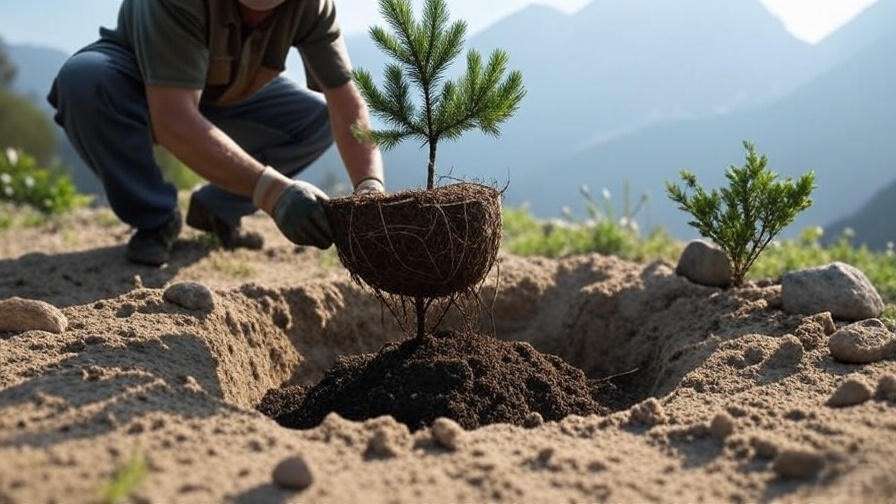
4. Caring for Alpine Trees: Maintenance Tips for Long-Term Success 🌿
4.1 Watering and Irrigation 💧
Young alpine trees need consistent moisture to establish roots—water deeply once a week during the first year, ensuring the top 6 inches of soil stay moist but not soggy. 🚿 Mature trees are drought-tolerant and may only need supplemental watering during prolonged dry spells. In rainy climates, monitor for overwatering, which can cause root rot. 🌧️ Consider drip irrigation systems for efficient, water-wise care, especially in high-altitude or arid regions. 💦
4.2 Pruning and Shaping ✂️
Prune alpine trees sparingly to maintain their natural shape. Late winter or early spring is the best time, before new growth begins. 🌳 Remove dead or damaged branches with clean, sharp shears, cutting at a 45-degree angle. For dwarf varieties, light trimming keeps their compact form. 📏 In windy or snowy regions, secure branches to prevent breakage. Always sterilize tools to avoid spreading disease. ❄️
4.3 Fertilizing and Soil Care 🌱
Alpine trees thrive in low-nutrient soils, so fertilize sparingly. Use a balanced, slow-release fertilizer (e.g., 10-10-10) in early spring to support growth. 🧑🌾 Organic options like compost or fish emulsion are eco-friendly alternatives. 🌿 Watch for signs of nutrient deficiency, such as yellowing needles or stunted growth, and test soil annually to monitor pH and nutrient levels. Mulch with bark or gravel to insulate roots and retain moisture. 🚨
Expert Tip: Follow this seasonal care calendar:
- Spring: Fertilize, prune lightly, check soil pH. 🌸
- Summer: Water young trees, monitor for pests. ☀️
- Fall: Plant new trees, apply mulch. 🍂
- Winter: Protect from snow load, check for frost damage. ❄️
5. Common Challenges and Solutions for Alpine Tree Care 🚩
5.1 Pests and Diseases 🐛
While alpine trees are hardy, they’re not immune to pests and diseases. Common culprits include bark beetles, which bore into trunks, and aphids, which sap nutrients from needles. 🕷️ To manage pests organically, introduce beneficial insects like ladybugs or use neem oil sprays. Fungal infections, such as needle cast, thrive in wet conditions and can cause needle drop. 🍄 Prevent this by ensuring good air circulation and avoiding overhead watering. Regular inspections—checking for discolored needles or sticky residue—catch issues early. For severe infestations, consult a local arborist. Dr. Sarah Linden, a plant pathologist, recommends, “Integrated pest management is key for alpine trees—combine cultural practices with minimal chemical intervention for sustainable results.” 🛡️
Quick Fix Guide:
| Issue | Symptoms | Solution |
|---|---|---|
| Bark Beetles | Small holes, sawdust on bark | Apply neem oil, remove infested branches |
| Aphids | Sticky residue, curled needles | Spray with soapy water, introduce ladybugs |
| Needle Cast | Yellowing, dropping needles | Improve drainage, apply fungicide if needed |
5.2 Weather-Related Stress ❄️
Alpine trees are built for tough conditions, but extreme weather can still pose challenges. High winds can snap branches, especially in young trees, so stake them during their first year. 💨 Heavy snow loads may cause limbs to break—gently brush off snow or install supports in winter. 🌨️ Intense UV radiation at high altitudes can scorch needles, so provide temporary shade for newly planted trees using burlap screens. ☀️ Mulching with 2–3 inches of bark or gravel insulates roots against freezing temperatures and reduces frost heaving. For trees in containers, move them to a sheltered area during extreme cold. 🪴
Pro Tip: Apply anti-desiccant sprays in late fall to protect needles from winter drying. This simple step can save young trees from windburn. ✅
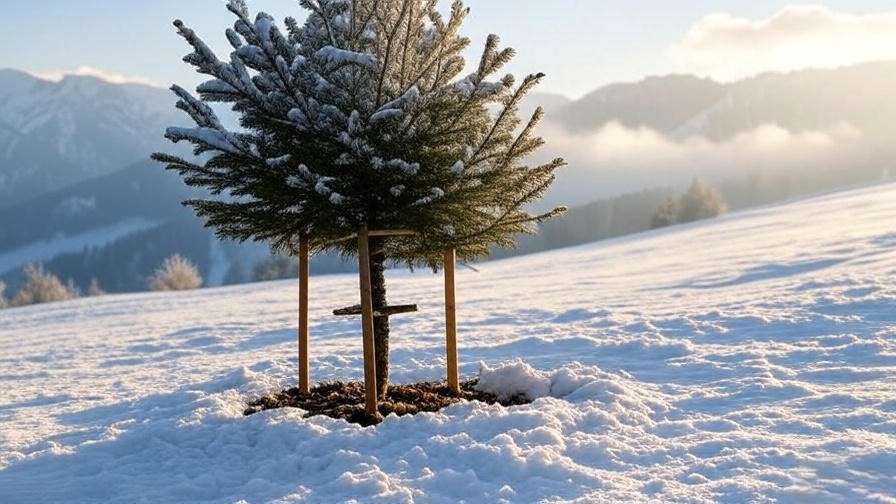
6. Designing a High-Altitude Garden with Alpine Trees 🌄
6.1 Aesthetic and Functional Uses 🌳
Alpine trees are as versatile as they are beautiful, making them ideal for various garden designs. Use dwarf varieties like Picea pungens ‘Globosa’ as focal points in rock gardens, where their compact shapes contrast with rugged stones. 🪨 Taller species, such as Engelmann spruce, create stunning natural privacy screens or windbreaks. Pair alpine trees with low-growing perennials like alpine aster (Aster alpinus) or creeping thyme for a cohesive look. 🌸 Their evergreen foliage adds year-round structure, while their resilience supports wildlife, attracting birds and small mammals. 🦋
For small spaces, consider container gardening with dwarf conifers. A cluster of potted alpine trees on a patio can evoke a mountain landscape without requiring a large yard. 🪴 For larger gardens, plant in groups to mimic natural alpine groves, enhancing both aesthetics and ecological benefits.
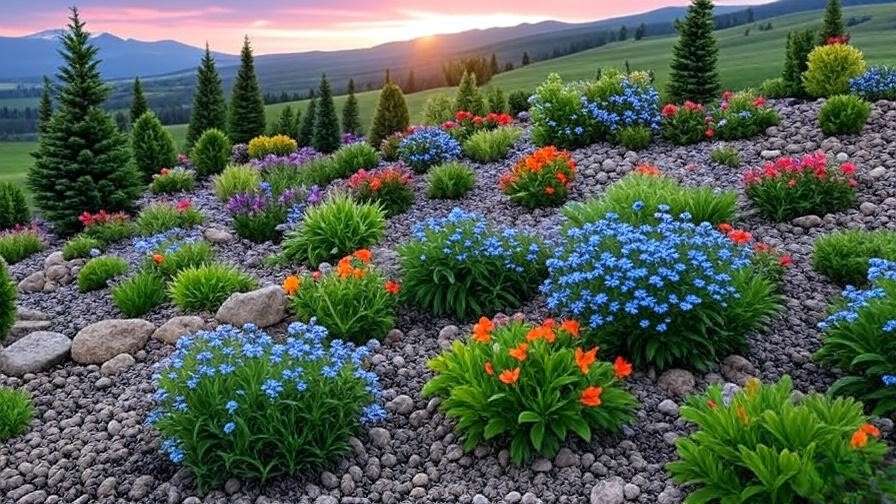
6.2 Sustainable Landscaping Practices 🌍
Alpine trees are champions of sustainability. Their deep root systems prevent soil erosion on slopes, making them ideal for hillside gardens. 🌎 They require minimal water once established, aligning with water-wise gardening principles. To boost biodiversity, integrate native alpine plants and avoid chemical pesticides, creating a haven for pollinators and birds. 🐦
Example design: A low-maintenance alpine garden with Bristlecone pines, alpine phlox, and gravel mulch. This setup conserves water, reduces upkeep, and thrives in harsh conditions. According to the Royal Horticultural Society, “Alpine trees are a cornerstone of sustainable landscaping, offering long-term environmental benefits with minimal input.” 🌿
Inspiration Gallery: Visualize a rock garden with dwarf Alberta spruce surrounded by colorful alpine perennials, or a windswept hillside anchored by subalpine firs. High-quality images of these designs can inspire readers to start their own projects. 📸
7. FAQs About Alpine Tree Care ❓
Here are answers to common questions, grounded in research and expert advice:
Q: Can alpine trees grow in low-altitude gardens?
A: Yes, with proper care! Mimic alpine conditions by using well-draining soil, ensuring full sun, and protecting from excessive humidity. Dwarf varieties are especially adaptable. 🌱
Q: How long do alpine trees live?
A: Many, like Bristlecone pines, can live for centuries or even millennia with proper care. Regular maintenance and pest management are key to longevity. 🌳
Q: Are alpine trees prone to pests?
A: They’re relatively resistant but can face issues like bark beetles or fungal diseases. Early detection and organic treatments keep them healthy. 🛡️
Q: What’s the best mulch for alpine trees?
A: Gravel or bark mulch mimics their natural habitat, retains moisture, and insulates roots. Apply a 2–3 inch layer, keeping it away from the trunk. 🪵
Myth Buster: “Alpine trees are too difficult for beginners.” Not true! With the right species and care, even novice gardeners can succeed. 🌿
Conclusion: Building Your Alpine Tree Oasis 🌲
Alpine trees are more than just plants—they’re a gateway to creating a resilient, beautiful, and sustainable garden. 🌿 From their ability to thrive in harsh conditions to their role in eco-friendly landscaping, these trees offer endless possibilities for gardeners of all levels. Start small with a dwarf conifer in a container or go bold with a grove of subalpine firs. 🌳 By following the tips in this guide—choosing the right species, planting correctly, and addressing challenges—you’ll create a high-altitude oasis that thrives for years to come.
Ready to start your alpine tree journey? Share your plans in the comments or tag us on social media with your garden photos! 📢 For more plant care inspiration, check out our articles on conifer care and sustainable landscaping. 🔗

